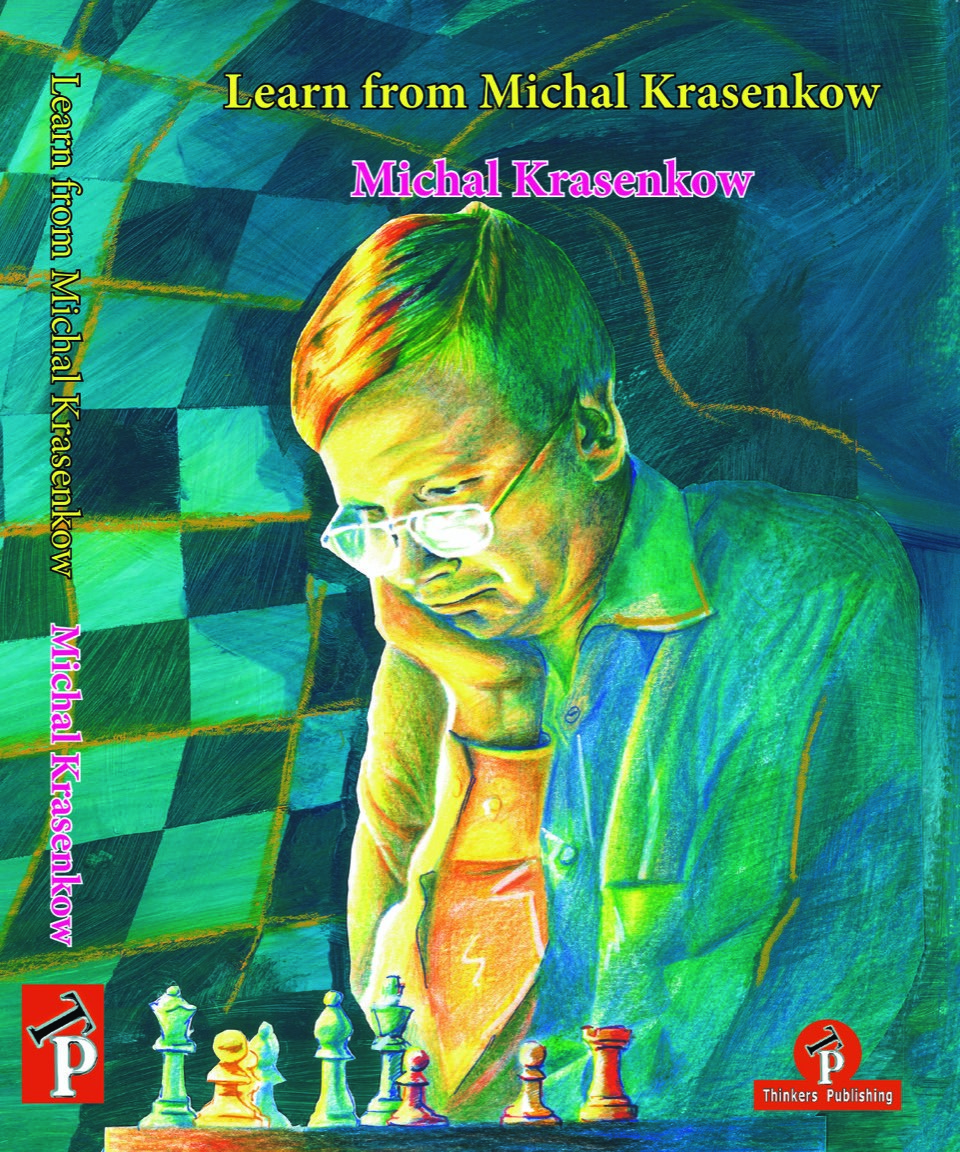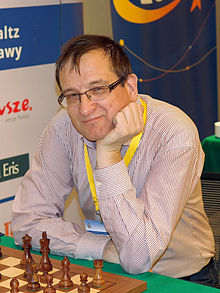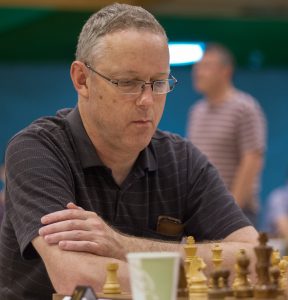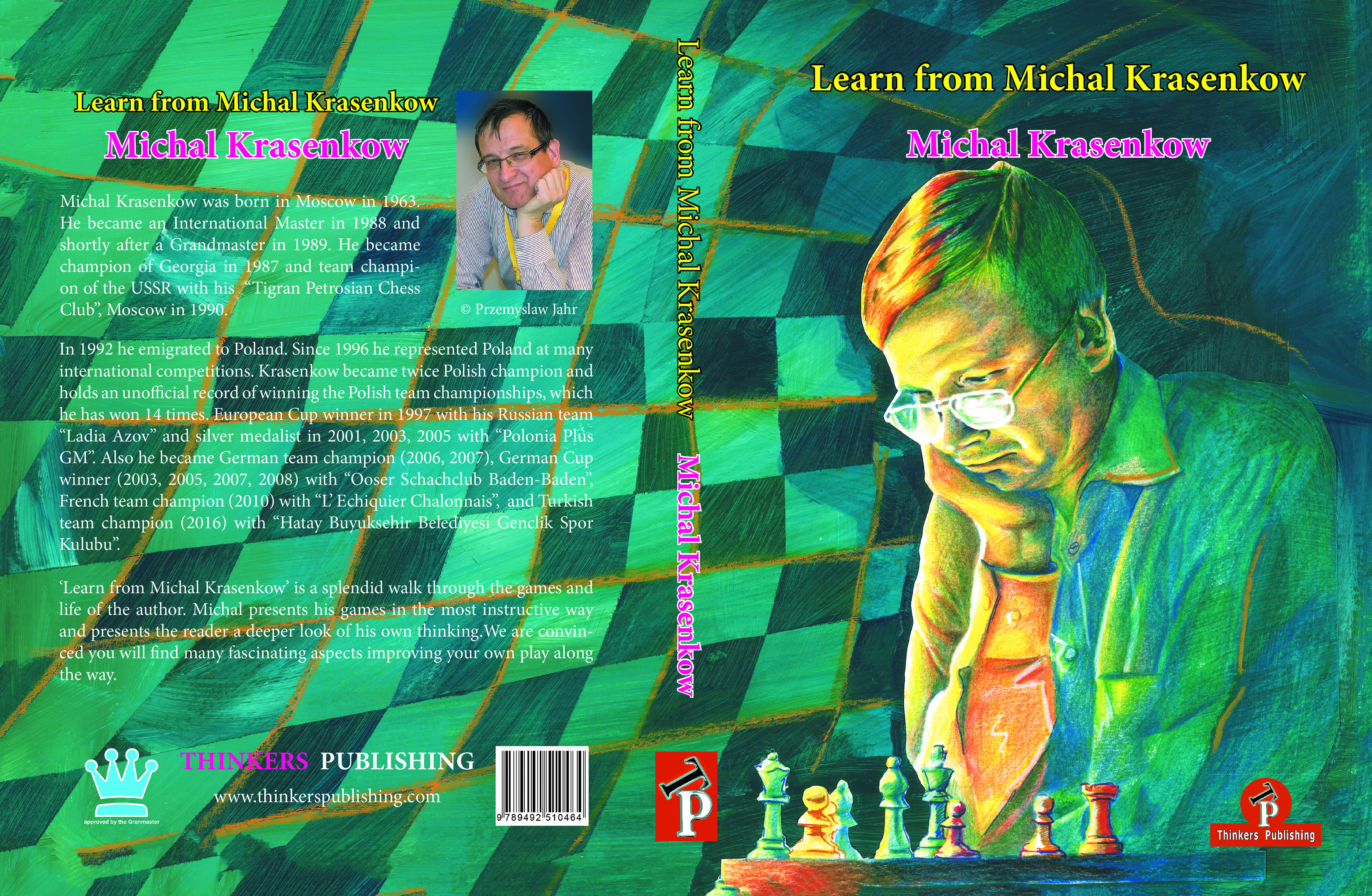Learn from Michal Krasenkow : Michal Krasenkow

In Learn from Michal Krasenkow the author annotates 54 of his complete games and, additionally, he analyses 12 of his endgames. Also, he provides just over 20 pages of interesting biographical information, which is mainly about his chess life although it includes personal details.

Michal Krasenkow is a top GM who has been in the worlds top 10, and in 2002 his rating was just over 2700 (which was even more impressive then than it is now). Currently 55 years years of age he has been on the chess scene for a long time, and indeed he entitles his biographical chapter “Five Decades in Chess”. As well as describing his own progress at chess, he also describes the difficulties he had making further progress within the (then) Soviet Union and he describes why he changed his name to Krasenkow, and how and why he later left the Soviet Union to become a Polish citizen. Interesting stuff…
The main body of this book contains his annotated games, which Krasenkow refers to as “Memorable Games”. Around 370 of the 408 pages are devoted to this, of which nearly 300 are for the complete games and the remainder for the endgames. The games are arranged into chapters with different themes, such as
- “Combinations & Tactics”,
- “Attack on the Uncastled King”,
- “Flank attack on the King”,
- “Positional Play”,
- “Defence” and so on.
He also includes a “Various” chapter for games that can’t easily be categorised. Similarly, the endings are separated into chapters for Pawn, Rook and Bishop endings. I guess that this structure helps with the “Learn” part of the book’s title.
The book does have a flaw: the Index of Games is nothing other than a list of the games with numbers, players and tournament – there is no page number given ! To make it worse, the games themselves do not include the game number in the header. This means that to find a game from the index the reader has to leaf through the pages and look to see if a page has a game that is before or after the one being looked for. To be fair, the reader needs only search the relevant chapter, not the whole book, but it is still rather tedious. This is a shame, because the author uses the game numbers in his introduction and the production values of the book are otherwise excellent. It is also fair to say that an index is not so important in a games collection as it is in other types of chess book, so I will leave it there. (Ed: having reviewed several titles from Thinkers Publishing BCN is of the opinion that the publisher has a policy of no index.)
The compelling star feature of the book is the high quality of the annotations themselves. Krasenkow provides clear explanations of many of the moves, and supplements this with concrete (sometimes quite deep!) lines when the position requires it. In my opinion he gets the balance just right, and it is easy to see why Krasenkow is a top coach as well as a strong player. Players of widely differing strengths will be able to enjoy and benefit from the author’s annotations.
Here is an example of Krasenkow’s clarity of thought, when discussing a position from a game against Sveshnikov :
“16. Nxf6+?!
A) I didn’t want to play 16. f3, fearing 16… Nh5, but then White can keep an edge by means of 17. g3 [rather than 17. Nc2 Nf4! 18 Nxf4 exf4 followed by …Bg5-f6].
B) Besides, Qd3 was possible. After the exchange on f6 Black gets control of the d4-square.”
This sort of commentary is quite typical of his style, although he can and does give lengthy lines where he feels this is appropriate.
In summary: I highly recommend this book. It can be read for enjoyment by those who simply like going through well-annotated chess games, and there is little doubt that more serious study will benefit those looking to improve.
Colin Purdon, July 20th 2019

Book Details :
- Hardcover : 408 pages
- Publisher: Thinkers Publishing (28 April 2019)
- Language: English
- ISBN-10: 9492510464
- ISBN-13: 978-9492510464
- Product Dimensions: 17.1 x 2.5 x 24.1 cm
Official web site of Thinkers Publishing

